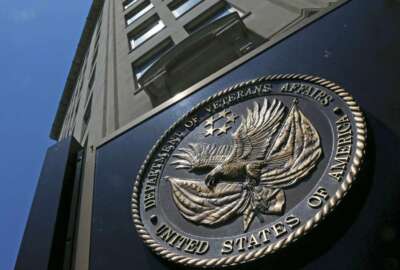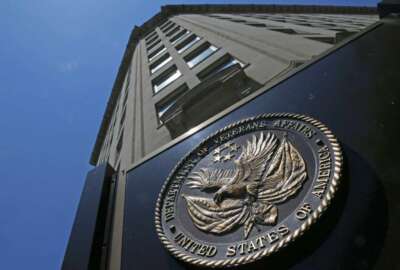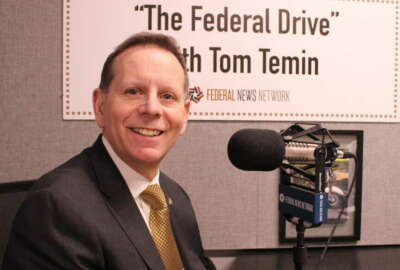
VBA says it will reduce disability claims backlog by fall, but Congress isn’t so sure
The Veterans Benefits Administration said it can bring down its backlog of 212,000 pending disability claims to a more manageable level by the end of September.
Veterans are waiting longer for disability benefits from the Department of Veterans Affairs, as the pandemic has delayed a key step in the complex process the agency uses to determine eligibility.
The Veterans Benefits Administration has a backlog today of about 350,000 outstanding compensation and pension (C&P) exams, which the agency uses as a means of determining a veteran’s eligibility for health and other benefits.
VBA attributes the backlog to its decision last April to pause in-person exams for two months during the height of the pandemic.
VBA’s contractor workforce gradually restarted in-person exams over the course of last year. That plan ultimately prevented VBA from incurring a larger backlog, but some veterans are still hesitant to visit a C&P site for an in-person exam.
The inventory of pending C&P exams has, in turn, expanded VBA’s backlog of disability claims. The number of disability claims pending for 125 days or longer has grown from 77,000 last March to 212,000 today.
The department expects to reduce the C&P inventory to a more manageable level of 140,000 pending exams by the end of the fiscal year.
“VBA’s contractors have already increased their capacity by more than 20% over pre-pandemic levels, and they’re committed to further increases until VA achieves its goal,” David McLenachen, executive director for VBA’s Medical Disability Examination Office, said Tuesday at a hearing on the agency’s backlog.
But members of Congress aren’t incredibly optimistic VBA will meet that timeline, especially as the agency now relies almost entirely on contractors to perform these exams.
“This committee and the veterans who we are here to support need to know that the VA has a plan to manage this inventory,” said Elaine Luria (D-Va.), chairman of the House Veterans Affairs Disability Assistance and Memorial Affairs Subcommittee. “You’ve spoken and alluded to increased capacity… and a record number of exams being conducted last week and more recently. But do you have a definitive, written plan?”
McLenachen said the agency has been working with its vendors to set production goals that will allow them to achieve their target for addressing the backlog.
The pandemic, he said, has made formal planning difficult.
“This planning that we’re discussing is occurring in a very challenging period of time,” McLenachen said. “There are a lot of unknown variables. I would love to do ordinary business planning and forecast out when certain events would happen and when we could achieve the goal.”
He hopes VBA contractors will be equipped to handle at least 45,000 C&P exams each week. Today, they’re conducting about 40,000 weekly exams.
“What we’re talking about is about 210,000 additional exams above and beyond the normal workload that would have to be worked down on a rough timeline between now and the end of the fiscal year of about seven months or a little bit less,” Luria said. “So you’re going to need to do 30,000 additional exams per month above and beyond what you’re doing in a normal workload.”
The agency said it’s exploring a variety of methods to expand its capacity to complete more exams.
The Veterans Health Administration is looking within its own medical facilities and hospital networks for additional personnel to help with exams.
When the department outsourced more C&P exams to contractors, it reassigned 300 former VA disability examiners to other positions within VHA. Many are working on the department’s vaccination and COVID-19 response efforts, said Toby Matthew, chief officer of VHA’s Office of Disability and Medical Health.
VA also expanded the number and kinds of exams that it can perform virtually, and those policies will stay in place beyond the pandemic, McLenachen said.
“That helped us a lot during the pandemic,” he added. “Telehealth is not a silver bullet for our exam inventory. Our schedule for rating disabilities [or] regulatory requirements really controls how many exams we can do through those type[s] of virtual modalities. For that reason most exams have to be done in person. It’s a forensic examination of a disability as opposed to a treatment visit such as VHA would do through telehealth.”
VBA has conducted about 100,000 telehealth exams and 102,000 acceptable clinical evidence (ACE) exams since last March. The ACE exams allow the Veterans Health Administration to review existing medical records instead of seeing a veteran for an in-person or virtual exam.
VBA has also performed 763,000 in-person C&P exams since last March, said Brent Arronte, VA’s deputy assistant inspector general for audits,
“Clearly in-person exams are the optimal choice here,” he said. “My concern is, yes, they’ve increased examiners by approximately 4,600 across the nation, but these alternate methods tend not to be as impactful I think as VBA has hoped. It does take time for these examiners to get trained. My fear right now in watching these numbers every month is that we might be getting into a situation where VBA is right now … they’re going to be treading water.”
Both the IG and the Government Accountability Office said VBA should develop a written strategy for expanding its capacity to conduct more C&P exams and resolve more disability claims.
GAO has long advocated for VA to conduct more oversight of its contractor examiners, especially as the department relies on the private sector to handle the vast majority of C&P exams. The department began using contractors back in 1996 and has since expanded its reliance on them.
Contractors handled 1.1 million of VBA’s 1.4 million C&P exams last year, GAO said.
“We think that conducting a thorough risk assessment of VBA’s reliance on contractor examiners would be a key first step in developing a strategy,” said Elizabeth Curda, director of GAO’s workforce, education and income security division. “This could include determining, for example, how much time would be needed for VHA medical centers to ramp up disability exam production if VBA contractors were to experience performance or capacity issues in the near or long-term future. Our recommendation for VBA to conduct targeted reviews of challenging exams could also help VBA identify potential areas of risk.”
Copyright © 2025 Federal News Network. All rights reserved. This website is not intended for users located within the European Economic Area.
Nicole Ogrysko is a reporter for Federal News Network focusing on the federal workforce and federal pay and benefits.
Follow @nogryskoWFED
Related Stories





